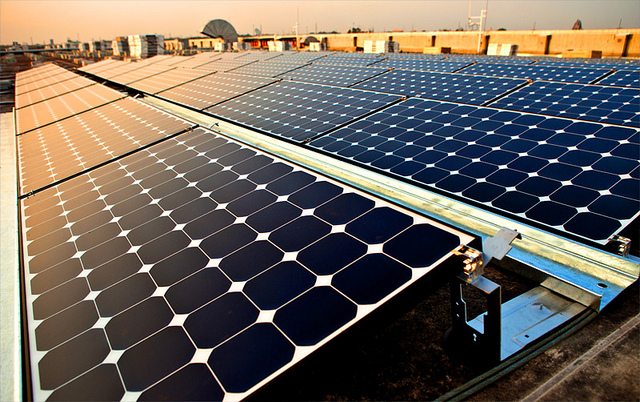

Energy
Much-needed $800bn renewable energy investment can come from fossil fuel subsidies
Much of the hundreds of billions of dollars worth of renewable energy investment that is needed to prevent the worst effects of climate change could come from the substantial subsidies given to fossil fuels, a new report has found.
In a new study published in the journal Climate Change Economics, researchers from the International Institute for Applied Systems Analysis (IIASA) attempt to put a price tag on efforts to limit the global temperature rise to 2C.
“Many countries say that they’re on board with the a target of 2C global mean temperature stabilisation by 2100; some have even made commitments to reduce their greenhouse gas emissions. But until now, it hasn’t been very clear how to get to that point, at least from an investment point of view,” said study lead author David McCollum.
“It’s high time we think about how much capital is needed for new power plants, biofuel refineries, efficient vehicles, and other technologies – and where those dollars need to flow – so that we get the emissions reductions we want.”
Modelling multiple scenarios, they calculate that an extra $800 billion (£467 billion) of annual investment is needed globally between now and 2050, on top of the $400 billion (£233 billion) a year that will be raised by existing policies. This is a significant increase from the $200-300 billion (£117-175 billion) invested per year today.
Thankfully, the researchers say that a large amount of the sum could be sourced from the global subsidies given to the production and consumption of fossil fuels.
The exact total of such subsidies is – like the quantity of required investment – difficult to pin down. According to the International Energy Agency (IEA), in 2012 direct fossil fuels subsidies totalled $544 billion (£323 billion).
The IIASA researchers point out that if this money were shifted into supporting renewables, it would go a long way to meeting the investment gap. Furthermore, their study does not account for the potentially significant savings that would be gained by switching from polluting fossil fuels to cleaner energy.
However, because energy infrastructure typically has a lifespan of between 30 and 60 years, the study warns that the transition must take place soon.
“That’s why the energy investment decisions of the next several years are so important – because they will shape the direction of the energy transition path for many years to come,” said IIASA energy program director Keywan Riahi.
UN experts recently criticised the massive sums of money given to the fossil fuel industry in subsidies, arguing that they must be curbed if efforts to decarbonise are to succeed.
Taking into account indirect subsidies, such as the failure to charge for pollution and climate change, the International Monetary Fund estimates that the subsidies actually amount to around $2 trillion (£1.19 trillion) – far surpassing the $101 billion (£59.7 billion) given to renewables in 2012.
In April, the Intergovernmental Panel on Climate Change warned that investments in fossil fuels, such as oil and coal, must drop by $30 billion (£18 billion) a year, while renewable energy’s share of global production will have to rise from 17% in 2010 to around 50% in 2050.
Without mitigation, scientists estimate that global temperatures may increase by as much as 3.7C to 4.8C by 2100, with devastating consequences around the world.
Photo: Intel Free Press via Flickr
Further reading:
IRENA: renewables key to delivering cheaper energy
IEA: $48tn energy investment needed to meet demand by 2035
IEA: shift from fossil fuels to renewable energy ‘long overdue’
Fossil fuel subsidies preventing transition to low-carbon economy
UN climate chief: clean energy needs investment worth $1tn a year































